Everyday cooking doesn’t have to be ordinary, it can certainly be special and extraordinary – in fact, it’s fast, sustainable, and surprisingly cheap. Bjorn Freitag shows how this is done in his new book.
It started so well! Really, in this case it is not a deep sigh, which each of us leaves with more or less enthusiasm. My review for this month flows smoothly from the pen, even better: it jumps off the keyboard. Because I don’t even have to think of a title because the title of the book says it all: “Favorite Food – Simple and Delicious”. What could I want more?
Probably many of you have known Bjorn Freitag for a long time – namely from different programs on WDR. Simple and Delicious is one of the most popular cooking formats on TV. “Simple and Delicious” is not only successfully played on TV, but the first book on the show is also consistently popular. Volume 2 is in front of me now, as is Volume 1 “Simple and Delicious – Quick Gourmet Kitchen with a Twist” published by Becker Joest Volk Verlag. And of course, as usual, with great food photos by Hubertus Schüler! Books for other WDR programs have also been published with Björn Freitag, such as “Der Vorkoster” or “Much for Little”, as well as “Smart Cooking” by BJVV.
Unusual for everyday life
Björn Freitag’s kitchen is for every day, but never out of the ordinary. Although it doesn’t overwhelm anyone, it’s still iconic – all the prerequisites to making even the most discerning eater happy. Friday’s ingredients aren’t overpriced, nor are they overpriced, but they’re mostly regional, sustainable, and amazingly cheap. In his programs as well as in his books, the star chef always takes a stand for local dishes and products. Incidentally, Bjorn Freitag was Germany’s youngest star chef when he first received the prestigious Michelin Guide award in 2001. With his clever ideas, even the ordinary local cucumber rises from its boring existence and becomes a delicious creature. Friday thoughts are far from exhausting, even for unnoticed ingredients like wild herbs from the region.
There are also famous classics, such as the Zürcher Geschnetzeltes with Rösti.
(Photo: © Hubertus Schüler)
Since Björn Freitag also travels and doesn’t always cook in or around the Ruhr region and works in his restaurant “Goldener Anker” in Dorsten, he not only reveals his personal delicacies and his favorite dishes from home in his “Favorite Food – Simple and Delicious”. , but also devotes itself to popular classics from travel dishes such as focaccia or paella or polenta and shakshouka or Indian chicken to steak borsch and Zurich.And if one of the other ingredients is not at hand, the author reveals popular alternatives, for example that Black pepper instead of Kampot pepper from Cambodia will do the trick.
Delicious dishes are fun for everyone
It’s enough just to list the chapters to see just how comprehensive Friday’s new book is: Simple Kitchen, Best of the Home, Travel Kitchen, Vegetarian Kitchen, After Work Kitchen, Bjorn Delicacies. The set of recipes largely consists of dishes that have received special attention from television viewers, as well as the chef’s previously unpublished favorite recipes. Practical tips and tricks on how to conjure delicious and healthy dishes from an abundance of fresh produce in no time makes the book a source of inspiration.
The book was co-authored by Thomas Modersbach, television journalist and chef. Freytag and Modersbach have known each other for more than 20 years, and this is how the different television formats came into being. It was also a good idea to design the book’s introduction as an interview, where Bjorn Freitag provides very personal insight. In the short introductions to individual chapters, he also tells us what he thinks about vegetarian food and “eating animals”, how his job always interferes even on vacation, how comfortable cooking can be, what home means to him or why the southern German “Schmankerl” is going so well with Westphalian. I’ve picked recipes from four seasons for you, thus making you curious about the season of asparagus and strawberries that lies ahead.
Herring tip with marinated cucumber slices
4 double fillets of matjes (alternatively herring-style fillets; see tip)
1 Granny Smith apple
150 grams of sour cream
Salt, white pepper from the grinder
2 red onions
2 tablespoons vegetable oil
sugar pinch
50 ml apple juice
1 cucumber
1 tablespoon mikawa mirin (sweet Japanese rice wine vinegar)
Pinch of wasabi paste
2 tablespoons sesame oil
1 teaspoon toasted sesame oil
A handful of Thai basil
Preparation time 15 minutes plus 30 minutes rest
Preparation:
1. Cut the herring fillets into small pieces. Wash the apples, quarter, core, and dice and place in a bowl with the maggis. Add the cream and a pinch of salt and pepper and mix.
2. Peel the onions, cut in half and cut into slices. Heat a frying pan, add vegetable oil and fry the onions until softened. Season with salt and sugar and wilt with apple juice. Add them to the Almatjes mixture, add them inside and leave them in the refrigerator for 30 minutes.
3. Peel the cucumber and use a vegetable peeler to cut the slices down to the blunt centre.
Mix the mirin, wasabi, a pinch of salt and both types of sesame oil in a bowl, add the cucumber slices and mix. Rinse the basil, shake to dry, chop and fold.
4. Arrange the tip of the herring with the marinated cucumber slices on the plates and enjoy.
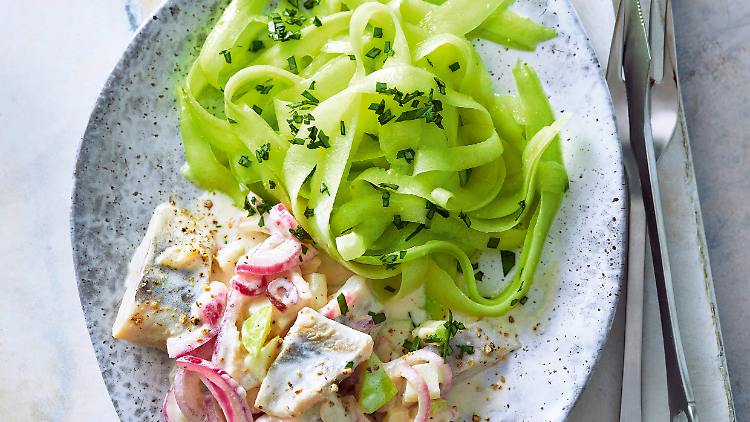
With Herringsstipp, the local cucumber acquires an exotic touch with spice “from the outside”.
(Photo: © Hubertus Schüler)
Bjorn’s advice: Real herring fillets are available fresh in early summer – usually from June. Later, they are then served as frozen or thawed merchandise. Alternatively, you can also use herring-style fillets, but since they are usually soaked in oil, the fish fillets should be thoroughly dried before handling and washed with kitchen paper.
Casaricci alla Norma with eggplant and ricotta
2 medium eggplant
1 red onion
2 garlic cloves
1 fresh hot red pepper
24 tomato dates
60 ml olive oil
4 tablespoons pine nuts
4 sprigs of Moroccan mint (instead of another type of mint)
320-400g Casarecce (amount depends on your appetite; alternatively a similar type of pasta)
salt
2 teaspoons tomato paste
100 ml vegetable broth
2 tablespoons of dark balsamic vinegar
4 tablespoons of ricotta
Preparation time is about 45 minutes; Vegan and refined sugar free
Preparation:
1. Clean and wash the eggplant and cut it into 1 cm cubes. Put them in a large frying pan and, without oil, remove the water over medium-high heat, stirring occasionally, and let it brown a little.
2. Meanwhile, peel the onions, cut into halves and cut into slices. Peel and finely chop the garlic cloves. Wash, rinse and chop the hot pepper. Wash the tomatoes and cut them in half, removing the stems.
3. When the eggplant begins to color, add onions, garlic, hot pepper and tomatoes to the pan, pour in olive oil and simmer for 10-15 minutes, stirring occasionally.
4. Meanwhile, put the water on the pasta and bring it to a boil. Gently toast the pine nuts in a skillet without fat. Rinse and dry the mint and pick the leaves. Pour kasarich into boiling water, add salt and cook until done.
5. Season the vegetables with salt, stir in the tomato paste and dissolve with the vegetable broth. Pour the vinegar and let it boil for a while.
6. Drain the casseroles into a colander, add them to the pan and stir well for 1 minute until the noodles are well combined with the sauce. Divide them into deep plates, add a spoonful of ricotta to each, sprinkle with pine nuts and decorate with mint.
Bjorn’s advice: In Sicily, this pasta is prepared from ricotta salata, that is, old salted ricotta that you can grate. I use fresh ricotta because you can get it everywhere these days. If you find Ricotta Salata at the cheese store, be sure to eat it! It is a good alternative to Parmesan or Pecorino cheese.
Fried chicken with curry pilaf
for frying
2 chicken breast fillets (200 grams each)
1 package of green asparagus
Green part of 1 leek
2 tablespoons vegetable oil
200 ml white wine
150 ml chicken broth
150gm frozen peas
salt
White pepper from the grinder
1 tablespoon butter
1 tablespoon cornstarch (as needed)
pilaf
1 tablespoon light peanut oil
250 gm basmati rice
1-2 teaspoons madras curry powder
About 375 ml chicken broth
preparation time 35 minutes; Gluten Free, No Refined Sugar
Preparation:
1. For the fricassee, remove the tendons from the chicken breasts and cut them into slices and set aside. Wash the asparagus, chop off the tough ends and chop into pieces. Wash the shallots and cut crosswise into slices.
2. To make pilaf, heat a saucepan, pour peanut oil, add basmati rice and curry powder and fry until golden while stirring.
Pour enough chicken broth to cover the rice by about 1 inch. Bring to a boil, cover and cook over very low heat for about 15 minutes.
3. Meanwhile, heat a large frying pan, add vegetable oil with asparagus and shallots and fry. Add the meat and stir for a while, stirring. Stir in wine, add chicken and pea broth and reduce briefly. Season with salt and pepper and add butter.
If necessary, dissolve the cornstarch in a little water and thicken the sauce with it.
4. Arrange the fried chicken and curry pilaf on the plates and serve.
Bjorn’s advice: I always like to stir up spice blends like curry or harissa powder because the flavors can unfold completely. However, the spices should not burn. I tend to use pepper at the end of the cooking process because it actually burns quickly.
Lemon Butter With Strawberry
for the mousse
6 pieces of gelatin
500 ml of milk
75 grams of sugar
125gm fresh cream
125 grams of sour cream
Organic lemon juice and grated zest
for strawberry
400 grams strawberry
1 tablespoon cane sugar
1 sprig of rosemary
Preparation time 30 minutes plus about 3 hours refrigeration; gluten free
Preparation:
1. To prepare the mousse, soak the gelatin in cold water for 5 minutes. Then we squeeze and put it in a small saucepan and melt it over a low heat.
Pour in the curd and whisk until the gelatin is completely dissolved. Stir and dissolve the sugar.
2. Pour the mixture into a bowl, and stir in the fresh cream first and then the sour cream with a paddle attachment.
Work in lemon peel and juice, fill into candy jars and refrigerate for about 3 hours.
3. Wash the strawberries, remove the stems, cut them into quarters, put them in a bowl and sprinkle with cane sugar. Rinse the rosemary, shake it to dry and cut off the needles.
4. Invert the lime mousse and buttermilk onto dessert plates. To do this, loosen the edge with a small knife and, if necessary, briefly place the dessert plates in warm water. Serve with strawberries and garnish with rosemary.
Heidi Dresner wishes you a lot of fun.

“Explorer. Communicator. Music geek. Web buff. Social media nerd. Food fanatic.”






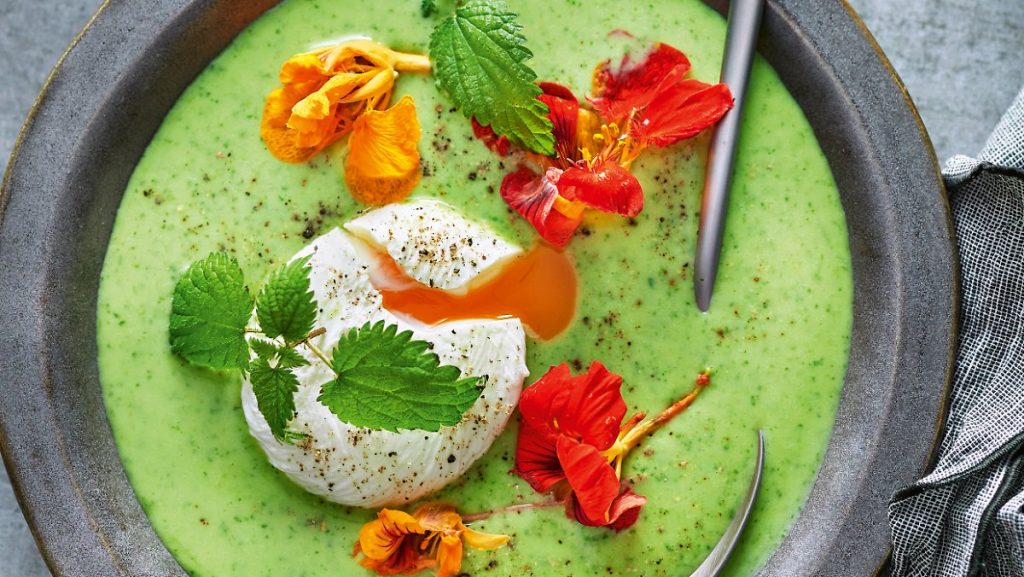
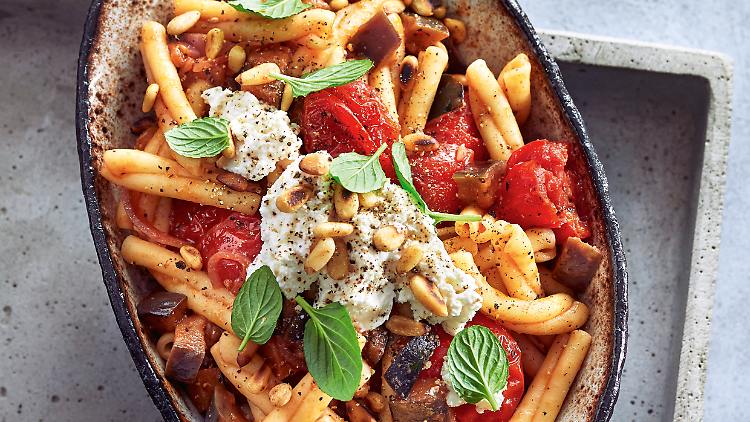
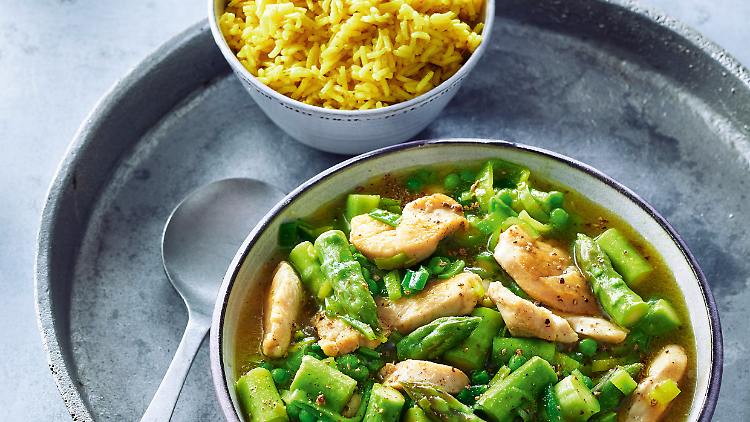
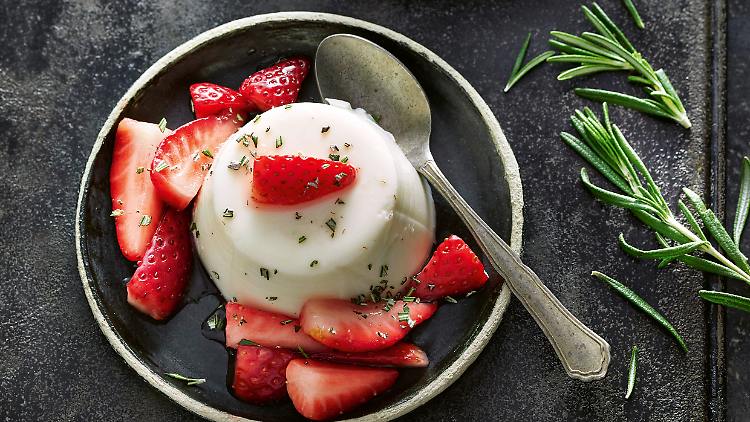
More Stories
Hawaii was canceled by CBS after 3 seasons
Inside NASA's months-long effort to save the Voyager 1 mission
Poppy Harlow is out at CNN after CNN This Morning was canceled